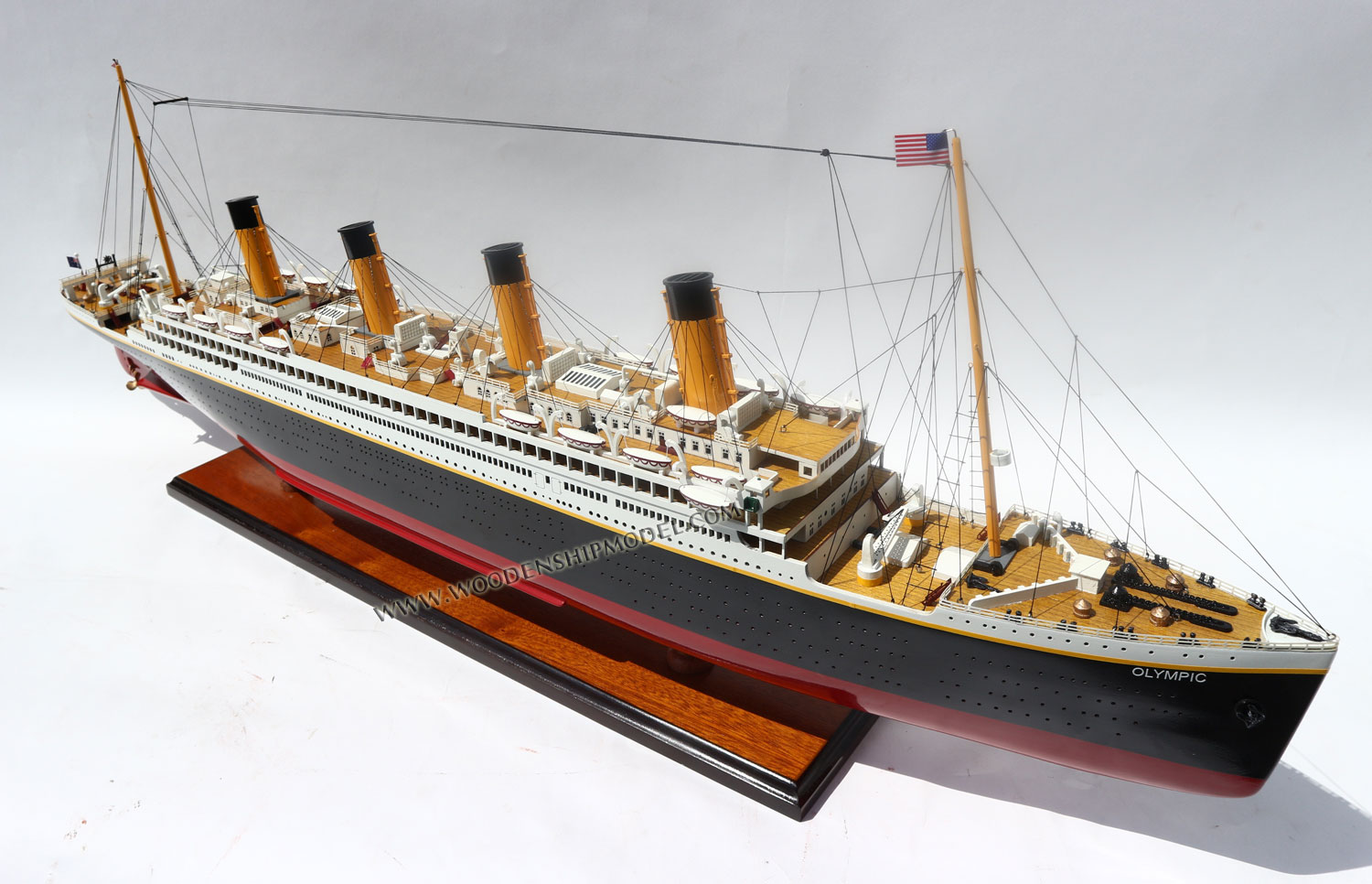|
HISTORY
 The
Olympic was first conceived in 1907. That summer,
White Star Chairman Bruce Ismay and his wife dined at the
house of Lord Pirrie - Chairman of Harland & Wolff shipyards
- and his wife. It was during the course of that evening
that the dream of building the largest liners the world had
ever seen was born. The rest, as they say, is history. The
Olympic was first conceived in 1907. That summer,
White Star Chairman Bruce Ismay and his wife dined at the
house of Lord Pirrie - Chairman of Harland & Wolff shipyards
- and his wife. It was during the course of that evening
that the dream of building the largest liners the world had
ever seen was born. The rest, as they say, is history.
The
keel for the Olympic, Harland & Wolff Yard No. 400,
was laid on December 16, 1908 under the shipyard's new Arrol
Gantry. Here sister, Titanic, was built alongside of
her, trailing some several months in the Olympic's
wake. The Olympic was launched on October 20, 1910.
The
world's newest, largest and most luxurious ocean liner made
her maiden voyage on June 14, 1911. Aboard the ship was J.
Bruce Ismay of the White Star Line, son of the Line's
founder. Also aboard was Harland & Wolff's Thomas Andrews,
nephew of Lord Pirrie. Captain Smith - who would go on to
command the Titanic on her legendary and ill-fated
maiden voyage the following year - was in command. The
Olympic was so remarkable that by the time she had
docked in New York, the formal order for the third entrant
of the Olympic-class was placed.
During
the following ten months, the Olympic garnered the
lion's share of the fame on the Atlantic. Her sister
Titanic was not given anywhere near the attention as had
been lavished on the Olympic in 1911 simply because
she was the second of the class. Only after she sank did the
Titanic eclipse the Olympic's fame.
Following the loss of the Titanic, the Olympic
returned to Harland & Wolff for extensive modifications that
included the addition of a new watertight bulkhead which
divided her Electric Engine Room, the installation of an
inner skin running the length of her Boiler and Engine
Rooms, and the raising of several critical transverse
bulkheads all the way to B Deck. During this refit, the
Olympic was also endowed with several Titanic-like
modifications, such as the Cafe Parisian, and emerged
slightly larger than her younger sister had been in April of
1912.
Her
career continued uninterrupted until the outbreak of the
Great War in August 1914. Thereafter, she saw an extensive
layup in Belfast, which was followed by distinguished
service as a troop transport. The ship enjoyed great success
in this guise, earning a reputation for reliability which
was sorely needed in the wake of the Titanic.
After
the War, the ship was returned to commercial service
following a large-scale refurbishment at Harland & Wolff
which included her conversion to an oil-firing powerplant.
Throughout the 1920's, she proved herself a solid, reliable
vessel. But even the great Olympic could not survive
the changing times. With the advent of newer, more
modern-looking liners with more private bathrooms for their
first class passengers, the Olympic began to look
dated. When the Great Depression hit, this situation was
made only worse as passenger bookings continued to decline.
Nevertheless, the ship managed to help keep the White Star
Line financially afloat.
Finally, the White Star Line was forced to merge with the
Cunard Line on May 10, 1934. There was simply too many old
ships in the newly combined fleet, and on April 12, 1935,
she was laid up in Southampton. She went to the breakers and
disappeared from the Atlantic scene forever. However, many
of her furnishings and fittings were preserved, and can
still be found today. |















 The
Olympic was first conceived in 1907. That summer,
White Star Chairman Bruce Ismay and his wife dined at the
house of Lord Pirrie - Chairman of Harland & Wolff shipyards
- and his wife. It was during the course of that evening
that the dream of building the largest liners the world had
ever seen was born. The rest, as they say, is history.
The
Olympic was first conceived in 1907. That summer,
White Star Chairman Bruce Ismay and his wife dined at the
house of Lord Pirrie - Chairman of Harland & Wolff shipyards
- and his wife. It was during the course of that evening
that the dream of building the largest liners the world had
ever seen was born. The rest, as they say, is history.